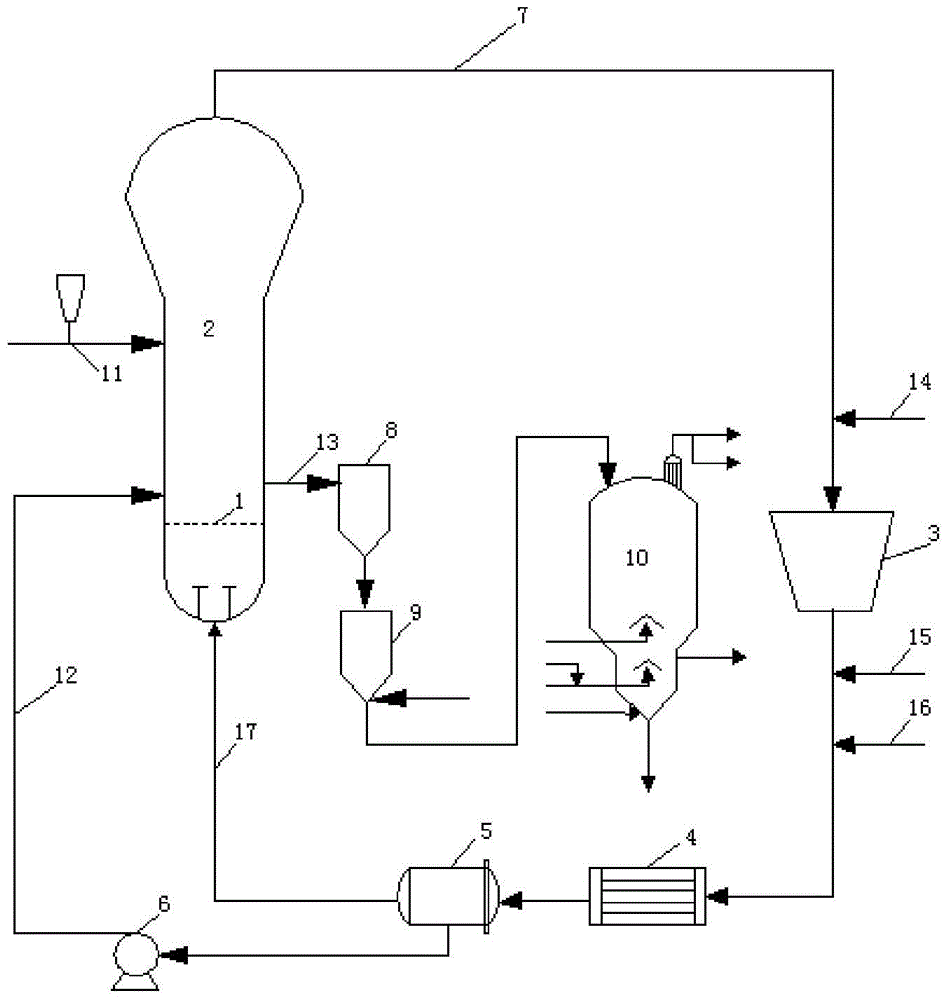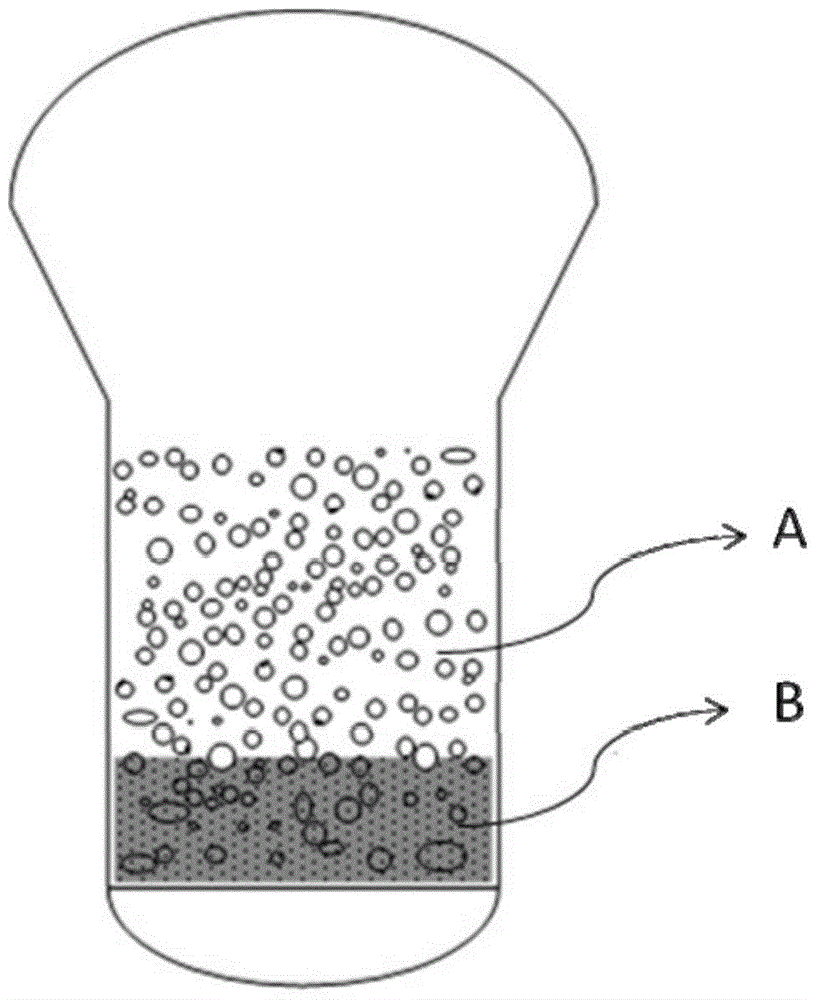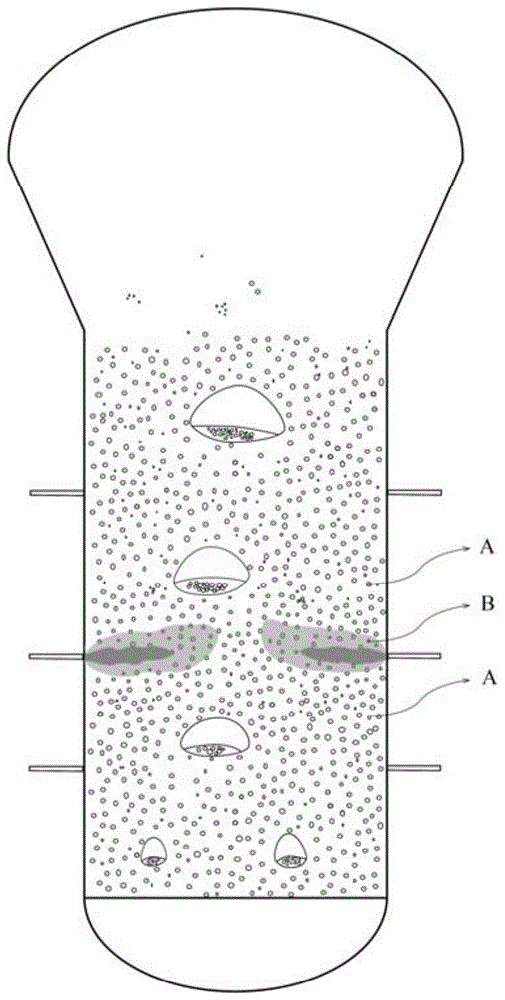A method for preparing olefin polymers using multi-temperature reaction zones
An olefin polymer and a technology for olefin polymerization, which are applied in the field of preparing olefin polymers by using multi-temperature reaction zones, can solve the problems of unsuitable reaction exothermic polyethylene, low heat transfer efficiency in the descending section, mutual interference of gases, etc. Heat removal ability, improved space-time yield, and the effect of not easy to stick or agglomerate
- Summary
- Abstract
- Description
- Claims
- Application Information
AI Technical Summary
Problems solved by technology
Method used
Image
Examples
Embodiment 1
[0102] in such as figure 1 In the shown fluidized bed reactor 2 with nitrogen fluidization, at first, a small amount of catalyst and cocatalyst are continuously input in an amount of 0.1 kg / h through the pipeline 11, and ethylene is input through the pipeline 14, and 1 through the pipeline 15. -Butene raw material gas and pipeline 16 input a small amount of isopentane condensing agent to start the initial olefin polymerization reaction in the fluidized bed reactor to generate a small amount of polyethylene. Then gradually increase the consumption of catalyst and cocatalyst to 5kg / h, and gradually increase the consumption of isopentane, and keep the fluidization gas velocity constant. Along with the progress of reaction, continue to input ethylene through pipeline 14, pipeline 15 continues to input 1-butene raw material gas, thereby constitute circulating medium in fluidized bed reactor, described circulating medium comprises hydrogen, nitrogen, ethylene, 1 -Butene and isopent...
Embodiment 2
[0112] in such as figure 1 In the shown fluidized bed reactor 2 with nitrogen fluidization, at first, a small amount of catalyst and cocatalyst are continuously input in an amount of 0.1 kg / h through the pipeline 11, and ethylene is input through the pipeline 14, and 1 through the pipeline 15. - Hexene raw material gas and pipeline 16 input a small amount of isopentane condensing agent to start the initial olefin polymerization reaction in the fluidized bed reactor to generate a small amount of polyethylene. Then gradually increase the consumption of catalyst and cocatalyst to 5kg / h, and gradually increase the consumption of isopentane, and keep the fluidization gas velocity constant. Along with the progress of reaction, continue to input ethylene through pipeline 14, pipeline 15 continues to input 1-hexene raw material gas, thereby constitute circulating medium in fluidized bed reactor, described circulating medium comprises hydrogen, nitrogen, ethylene, 1 - Hexene and isope...
Embodiment 3
[0122] in such as figure 1 In the shown fluidized bed reactor 2 with nitrogen fluidization, at first, a small amount of catalyst and cocatalyst are continuously input in an amount of 0.1 kg / h through the pipeline 11, and ethylene is input through the pipeline 14, and 1 through the pipeline 15. -Butene and 1-hexene raw material gas and pipeline 16 input a small amount of isopentane condensing agent to start the initial olefin polymerization reaction in the fluidized bed reactor to generate a small amount of polyethylene. Then gradually increase the consumption of catalyst and cocatalyst to 5kg / h, and gradually increase the consumption of isopentane, and keep the fluidization gas velocity constant. Along with the progress of reaction, continue to input ethylene by pipeline 14, pipeline 15 continues to input 1-butene and 1-hexene raw material gas, thereby constitute circulating medium in fluidized bed reactor, described circulating medium comprises hydrogen, Nitrogen, Ethylene, ...
PUM
| Property | Measurement | Unit |
|---|---|---|
| melting point | aaaaa | aaaaa |
| density | aaaaa | aaaaa |
| melt flow index | aaaaa | aaaaa |
Abstract
Description
Claims
Application Information
 Login to View More
Login to View More - R&D
- Intellectual Property
- Life Sciences
- Materials
- Tech Scout
- Unparalleled Data Quality
- Higher Quality Content
- 60% Fewer Hallucinations
Browse by: Latest US Patents, China's latest patents, Technical Efficacy Thesaurus, Application Domain, Technology Topic, Popular Technical Reports.
© 2025 PatSnap. All rights reserved.Legal|Privacy policy|Modern Slavery Act Transparency Statement|Sitemap|About US| Contact US: help@patsnap.com



